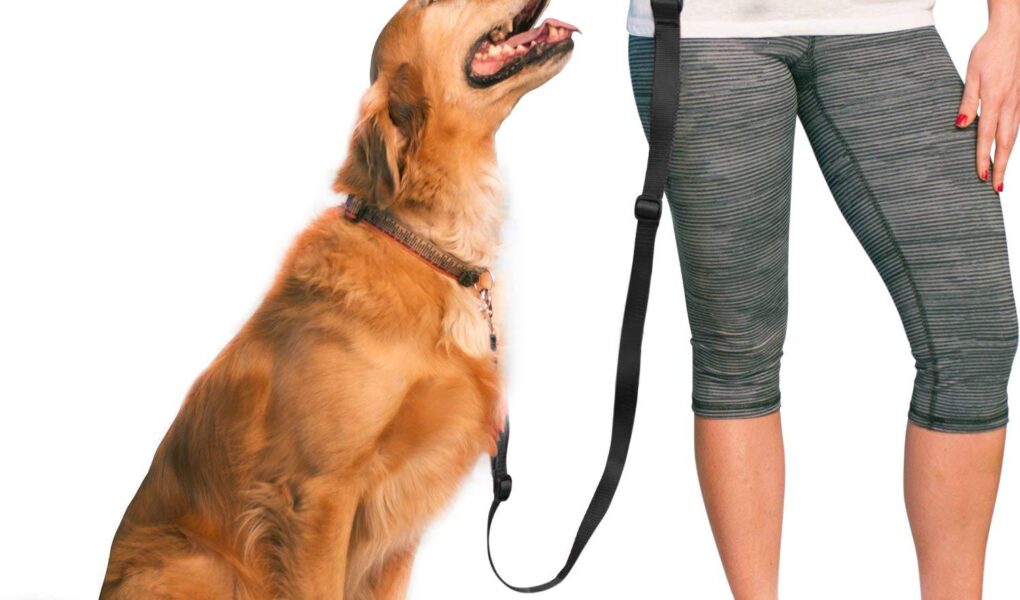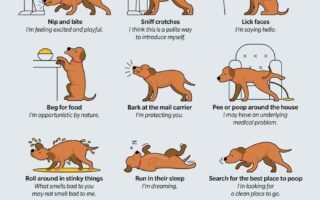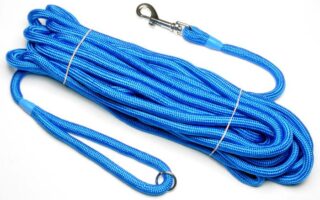When it comes to dog training, having the right tools can make all the difference. Among the various accessories that assist in shaping a well-behaved companion, the dog leash stands out as a fundamental yet often overlooked asset. A good leash can transform the way you and your furry friend engage during training sessions, fostering better communication while ensuring safety and control. Whether you’re teaching basic commands, addressing behavioral issues, or simply enjoying a leisurely stroll, the right leash can enhance your training experience. In this article, we will explore the best dog leashes designed specifically for training purposes, examining their features, benefits, and how they can help you cultivate a strong bond with your canine companion. Join us as we dive into the world of dog leashes and discover the tools that can lead you and your pup to success.
Table of Contents
- Choosing the Right Material for Durability and Comfort
- Understanding Different Leash Types and Their Training Benefits
- Top Recommendations for Every Training Scenario
- Tips for Incorporating a New Leash into Your Training Routine
- Q&A
- Key Takeaways
Choosing the Right Material for Durability and Comfort
When selecting a leash that balances durability and comfort, it’s crucial to consider the material composition carefully. A leash made from high-quality nylon is often a top choice due to its strength and resistance to wear and tear. Additionally, look for options with reinforced stitching that will withstand vigorous training sessions. Some trainers also prefer biothane, a synthetic material that resembles leather but is more durable, waterproof, and easy to clean. Each material offers a unique set of features that cater to different training environments, so weigh them based on your specific needs.
In terms of comfort, you want to ensure the leash is user-friendly for both you and your dog. Features such as padded handles provide a comfortable grip, especially during longer training walks. Moreover, consider leashes with adjustable lengths, allowing flexibility to accommodate various training techniques. Here’s a quick comparison of some common materials available in dog leashes:
| Material | Durability | Comfort | Maintenance |
|---|---|---|---|
| Nylon | High | Moderate | Easy to clean |
| Biothane | Very High | High | Very easy to clean |
| Leather | Moderate | High | Requires conditioning |
Understanding Different Leash Types and Their Training Benefits
Choosing the right leash can significantly impact the effectiveness of your training sessions. Different leash types cater to specific needs and training approaches. For instance, standard leashes (typically 6 feet long) offer control and are excellent for basic obedience training. Conversely, retractable leashes provide extra freedom but can lead to confusion for dogs who are not yet fully trained, as they can extend or retract unpredictably. When investing in a training leash, it’s essential to assess your dog’s behavior and your training goals.
Beyond the standard options, various specialized leashes can enhance training efforts. Martingale collars, when attached to a leash, can help prevent escape artist dogs from slipping away, while long lines are perfect for teaching recall over larger distances. The following table outlines the characteristics and benefits of different leash types:
| Leash Type | Features | Best For |
|---|---|---|
| Standard Leash | Fixed length, sturdy | Basic obedience, everyday walks |
| Retractable Leash | Adjustable length, spring-loaded | Dogs needing some freedom (if well-trained) |
| Martingale Leash | Prevents slipping, adds gentle constriction | Training dogs that pull or escape |
| Long Line | Extended length (up to 30 feet) | Teaching recall, outdoor training |
Top Recommendations for Every Training Scenario
When selecting the ideal leash for training, it is crucial to consider your dog’s size, temperament, and specific training goals. A standard flat leash (typically 6 feet long) is excellent for basic obedience training, providing just enough length for your dog to explore while maintaining control. For those engaging in recall or distance training, a long line leash (15-30 feet) allows dogs to experience freedom while still keeping them tethered. Additionally, adjustable leashes offer versatility, enabling you to change the length according to the training scenario, so you can switch from short to long as the situation demands.
Furthermore, features that enhance comfort for both you and your dog can make a significant difference in your training sessions. Look for leashes with padded handles to prevent discomfort during prolonged use, especially during vigorous activities. Reflective materials or bright colors can also improve visibility during outdoor training in low-light conditions. Below is a simple comparison table showcasing recommended leashes based on specific training scenarios:
| Training Scenario | Recommended Leash Type | Key Features |
|---|---|---|
| Basic Obedience | Standard Flat Leash | Control, Durability |
| Recall Training | Long Line Leash | Distance, Freedom |
| Versatile Training | Adjustable Leash | Length Options, Convenience |
| Night Training | Reflective Leash | Visibility, Safety |
Tips for Incorporating a New Leash into Your Training Routine
When introducing a new leash into your training routine, start by allowing your dog to get familiar with it. Take time to let your pup sniff and explore the leash before actually using it for walks. This not only builds a positive association but also eases any anxiety they might have. Gradually incorporate the leash during short training sessions where you reward desired behaviors. Doing so creates a positive reinforcement cycle, ensuring your dog sees the leash as a tool for fun rather than a constraint.
As you progress, be mindful of how you integrate the leash into your dog’s daily activities. Consider these additional strategies to streamline the process:
- Utilize the leash for interactive games, such as fetch or agility training.
- Practice basic commands while walking on the leash to reinforce good manners.
- Incorporate short, distraction-free environments initially before moving to busier areas.
To further enhance your training, track your progress with a simple log. This can help identify patterns and adjust techniques accordingly:
| Date | Leash Type | Training Focus | Media Used |
|---|---|---|---|
| 10/10/2023 | Retractable | Loose Leash Walking | Treats & Clicker |
| 10/11/2023 | Standard | Recall | Whistle & Treats |
| 10/12/2023 | Martingale | Desensitization | Toys & Praise |
Q&A
Q&A: The Best Dog Leash for Training
Q1: What makes a dog leash suitable for training purposes?
A1: A suitable training leash is typically designed to provide you with control without restricting your dog’s freedom. Look for features like adjustable lengths, comfortable handles, and durability. Materials like nylon or biothane are also great because they withstand wear and tear while providing a good grip.
Q2: Should I choose a standard leash or an adjustable one for training?
A2: Both options have their advantages. A standard 6-foot leash is excellent for everyday training, as it gives a consistent distance between you and your dog. On the other hand, an adjustable leash can adapt to different training situations, allowing you to set the length according to your needs—ideal for recall training or walking in busy areas.
Q3: Are there specific leashes designed for strong pullers?
A3: Yes! If you have a strong puller, consider leashes that come with reinforced clips or even those designed to reduce pulling, like no-pull leashes. These leashes often have features like a front-clip harness connection points that can help correct pulling behavior effectively while providing safety and comfort for your pup.
Q4: What role do materials play in choosing a training leash?
A4: The material of the leash plays a crucial role in durability and comfort. Nylon is popular for its strength and lightweight properties, while leather offers a classic feel and additional comfort. If you frequently train in varying weather, consider waterproof or weather-resistant materials that will stand up to mud and rain without deteriorating.
Q5: How important is leash width when selecting a training leash?
A5: Leash width can significantly affect comfort and control. A standard width of 3/4 inch works well for most dogs, but for larger breeds, a 1-inch width may provide extra durability and control. For small dogs, a thinner leash (around 1/2 inch) can be just right, ensuring a better grip and less bulk.
Q6: Can a retractable leash be used for training?
A6: While retractable leashes can be convenient for casual walks, they are not ideal for training. Their tendency to allow too much freedom can hinder your ability to control your dog effectively, particularly in a training context where you need to reinforce commands and maintain consistent boundaries.
Q7: Are there leashes that include training features?
A7: Yes! Some leashes come with built-in training features, like stop-and-go systems or additional clips for a second-hand hold. Some designs even include training pouches for carrying treats, allowing for a seamless training experience without fumbling around for rewards during sessions.
Q8: What should I look for in a handle when choosing a training leash?
A8: The handle is often overlooked but is essential for comfort and control. Look for padded handles that provide a secure grip and reduce strain on your hands during long training sessions. Some models offer ergonomic designs that help take the stress off your wrist.
Q9: How can I determine the right leash length for my dog?
A9: The ideal leash length often depends on your training goals and your dog’s behavior. For basic training and loose-leash walking, a 6-foot leash is often adequate. For advanced training, you might consider longer leashes (up to 15 feet) to develop more recall skills in an open space while still maintaining control.
Q10: Are there any brands that stand out in the training leash market?
A10: Brands like PetSafe, Kurgo, and Ruffwear are well-regarded for their high-quality training leashes. They offer various styles, lengths, and features that cater to different training needs while ensuring both dog comfort and handler control. Always read reviews to find the perfect match for your training style and your dog’s behavior!
Key Takeaways
In the exhilarating journey of dog training, the right tools can make all the difference. Choosing the best dog leash isn’t just about functionality; it’s about forging a stronger bond with your furry companion and fostering a deeper understanding between you both. Whether you opt for a standard leash, a retractable model, or a training-specific design, remember that consistency, patience, and love are the keys to success. As you embark on your training adventures, may every walk become an opportunity for growth, connection, and memorable experiences. With the right leash in hand, you’re not just leading your dog—you’re guiding them towards a lifetime of learning and loyalty. Happy training!



